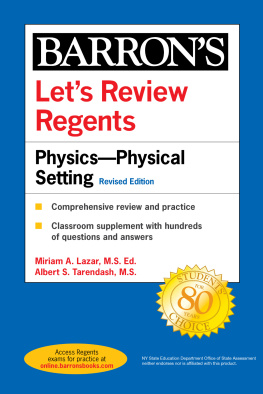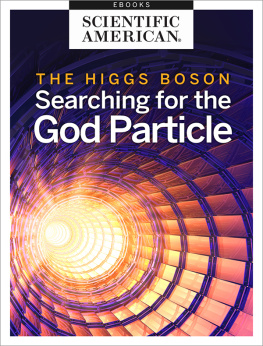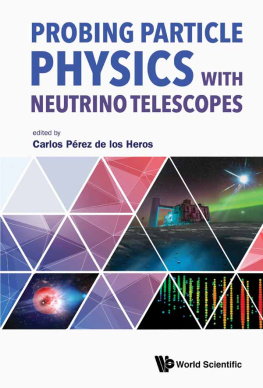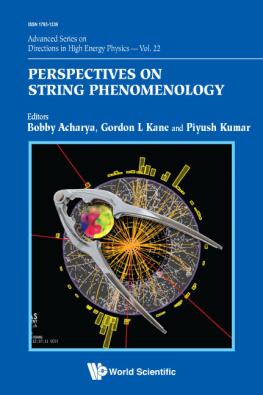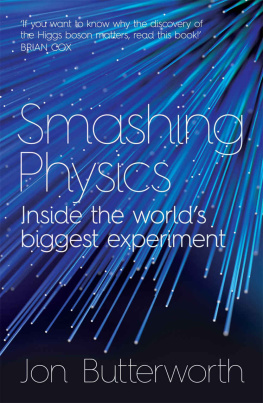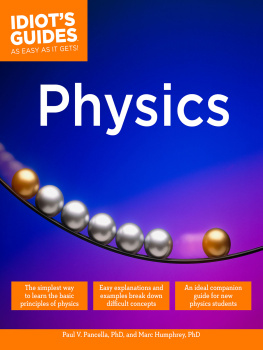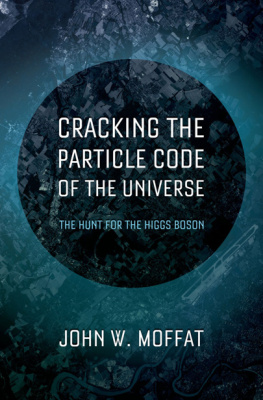PHYSICS IN MINUTES
GILES SPARROW
CONSULTANT: PROFESSOR DAVID W. HUGHES


New York London
2014 by Giles Sparrow
All rights reserved. No part of this book may be reproduced in any form or by any electronic or mechanical means, including information storage and retrieval systems, without permission in writing from the publisher, except by reviewers, who may quote brief passages in a review. Scanning, uploading, and electronic distribution of this book or the facilitation of the same without the permission of the publisher is prohibited.
Please purchase only authorized electronic editions, and do not participate in or encourage electronic piracy of copyrighted materials. Your support of the authors rights is appreciated.
Any member of educational institutions wishing to photocopy part or all of the work for classroom use or anthology should send inquiries to Permissions c/o Quercus Publishing Inc., 31 West 57th Street, 6th Floor, New York, NY 10019, or to .
e-ISBN 978-1-62365-340-8
Distributed in the United States and Canada by
Hachette Book Group
237 Park Avenue
New York, NY 10017
www.quercus.com
CONTENTS

Introduction
Theres an old classroom joke that neatly defines the three major school sciences thus: If it wriggles, its biology. If it smells, its chemistry. And if it doesnt work, its physics. And sadly, while physics is on the receiving end of this particular punch line, those definitions will probably ring a bell with a lot of people. I certainly served my classroom time fudging the results of experiments to measure acceleration due to gravity or demonstrate Boyles law.
But the classroom experience does physics a disservice in reality it is perhaps the oldest and certainly the deepest of all the sciences, revealing fundamental truths about the way in which the Universe operates. Although it has taken centuries for us to realize it, physical principles underpin many of the other sciences and all of modern technology. Some would even argue that astronomy, chemistry, and even molecular biology are, in essence, applied physics.
As a science, physics can be both beguilingly simple and bewilderingly complex. The simple equation of motion and laws of electricity and magnetism we learn (and all too soon forget) in the classroom are the same ones that are ultimately applied to building awesomely sophisticated machines such as the Large Hadron Collider, while the alluring handful of fundamental particles that seem to explain the nature of matter itself have properties that can only be explained by theories calling for half a dozen or more additional, unseen dimensions. Even a thought experiment as simple as putting a cat in a box with some knock-out gas turns out to have far-reaching implications for the nature of reality itself.
This book takes you on a journey through the whole of physics, from vaguely remembered classroom experiments to the cutting edge where science blurs into philosophy. With 200 topics and an avowed intent to avoid daunting equations wherever possible, we can barely scratch the surface, but by the time you reach the end, I hope youll find your memories stirred and your thoughts provoked. Above all else, I hope youll be convinced that, contrary to that old joke, physics works .
Classical mechanics
Mechanics is the field of physics that concerns itself with the behaviour of objects in motion or subject to forces. With origins dating back to ancient Greece, it is the oldest area of physics, and is referred to as classical because it involves laws that were understood long before the twin 20th-century scientific breakthroughs of quantum theory and relativity. These laws can still be applied to explain most common phenomena in the Universe that occur from the scale of atoms and molecules upwards. Its only in extreme situations involving high speeds, strong gravitational fields or very small scales that the more recent breakthroughs offer a more accurate description of whats really going on.
Classical mechanics describes aspects of the Universe that range from simple machines to the orbits of planets, and the properties of solids, liquids and gases from the atomic level up to everyday or macroscopic scales.
Underlying all these different phenomena is an elegantly simple model of colliding bodies, and simple laws that govern their interaction and behaviour. The techniques of classical mechanics allow us to calculate the gain, loss and transfer of energy between particles, and predict their behaviour in a variety of situations.
The most important of these laws are Newtons laws of motion and gravitation, described by the English physicist Sir Isaac Newton in his 1687 book on the Principles of Natural Philosophy (best known from its Latin title as simply The Principia ). Newtons laws describe the motion of objects under the influence of forces (see ). As such, they provide a complete description of many natural phenomena that only breaks down in extreme conditions on the submicroscopic scales of quantum physics or in the situations of extreme speed or gravity described by relativity. Indeed, Newtons laws do such a good job of describing the everyday world around us that Newtonian physics is often used as a synonym for the entire field of classical mechanics.
Speed, velocity and acceleration
The concepts of speed, velocity and acceleration are vital to describing the motion of all bodies in mechanics. Speed and velocity are commonly treated as if they are interchangeable, but strictly speaking, speed is a measure of a bodys rate of motion in any direction, while velocity is a measure of motion in a specific direction. Both can be measured in the same units (such as metres per second), but speed is a directionless or scalar quantity, while velocity is a directed or vector quantity. In most situations, its far more useful to know an objects velocity than its speed.
Acceleration is another vector quantity it measures the rate of change in an objects velocity (in units such as metres per second per second, often written m/s2). Acceleration occurs only when an external force is applied to the object, and depending on the direction of that force, can result in a reduction in its velocity (sometimes termed deceleration) or a change in direction as well as magnitude of its velocity.

When a car accelerates at a constant rate (a), its velocity (v) increases steadily, while the total distance travelled (x) increases exponentially.
Mass, inertia and weight

The related quantities of mass, inertia and weight describe an objects innate susceptibility to external forces of acceleration. Mass and weight are often (and incorrectly) used interchangeably an objects mass is directly related to the amount of material it contains, and only changes if material is added or removed (or in extreme situations described by Einstein see ). Inertia is an objects tendency to resist any change in its motion it is directly proportional to the mass an object contains, and is not usually measured separately, despite being an important concept in Newtonian physics.



